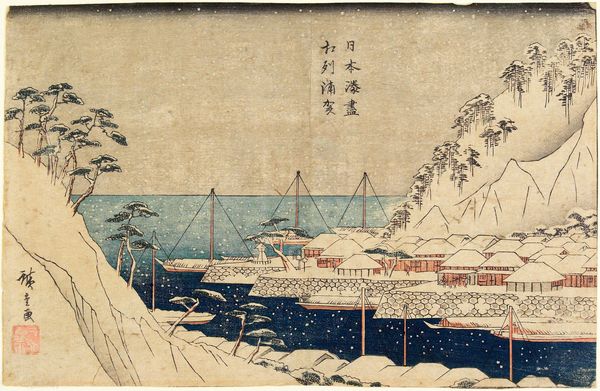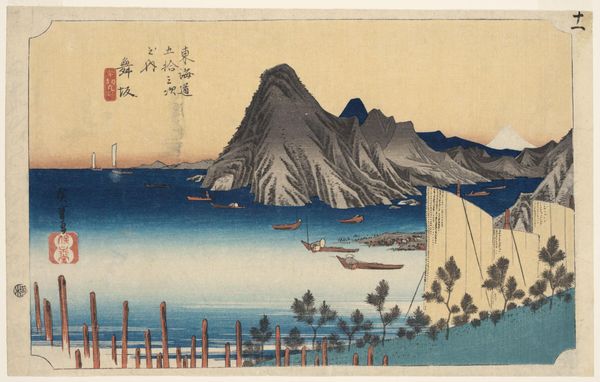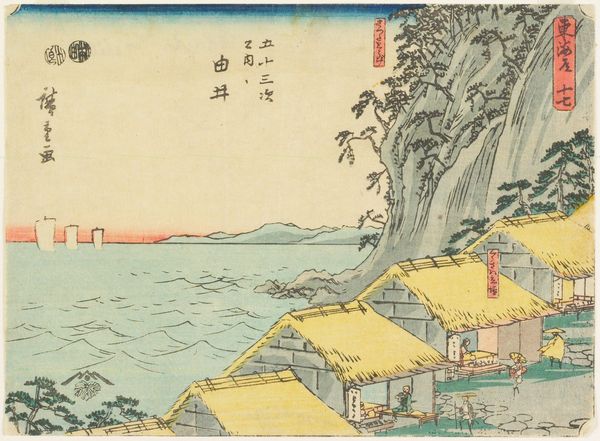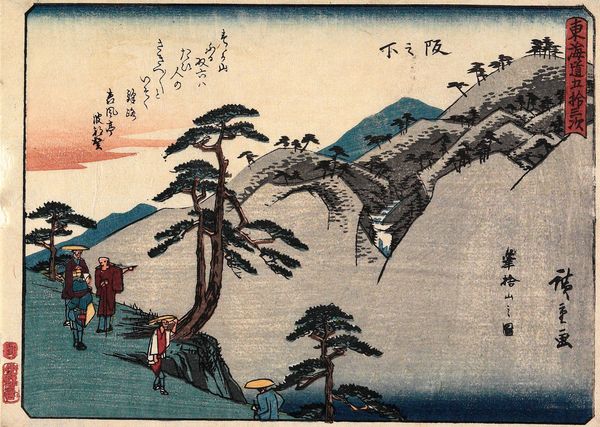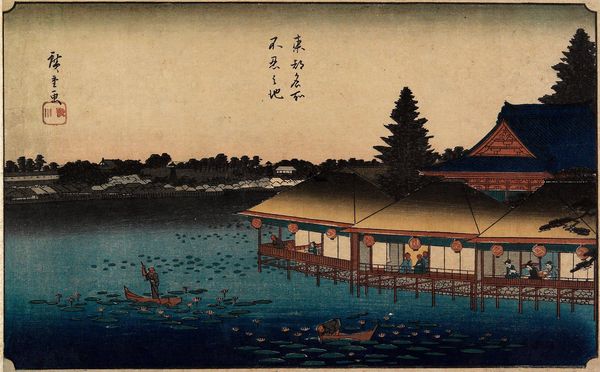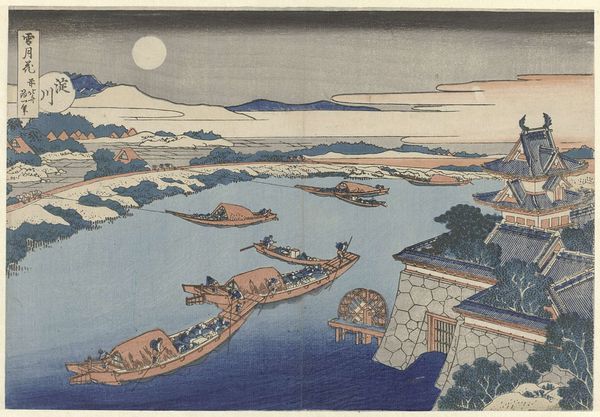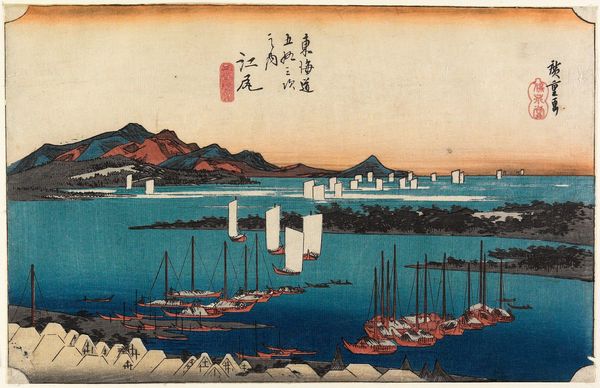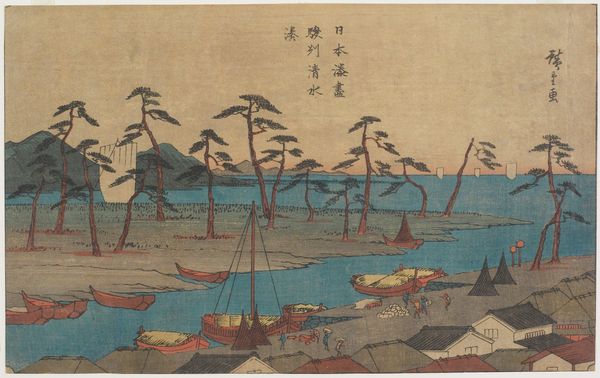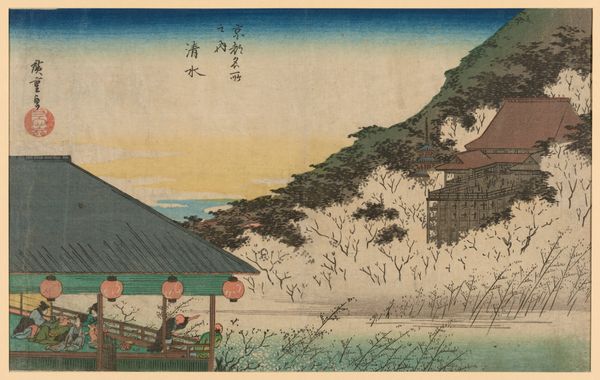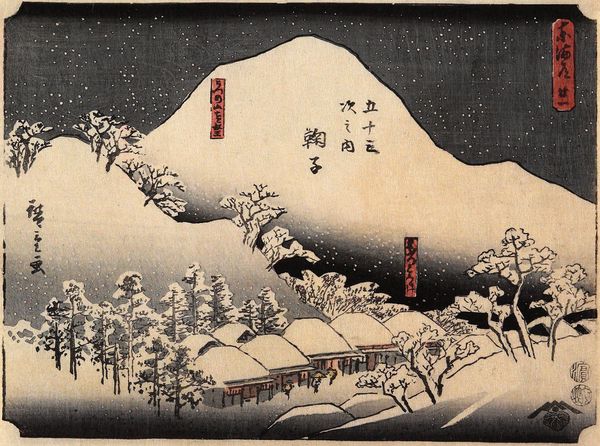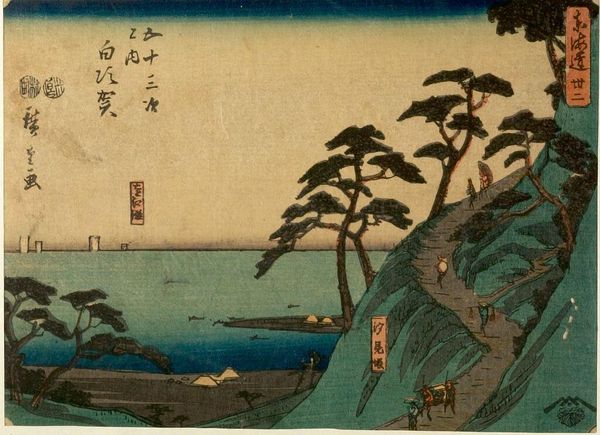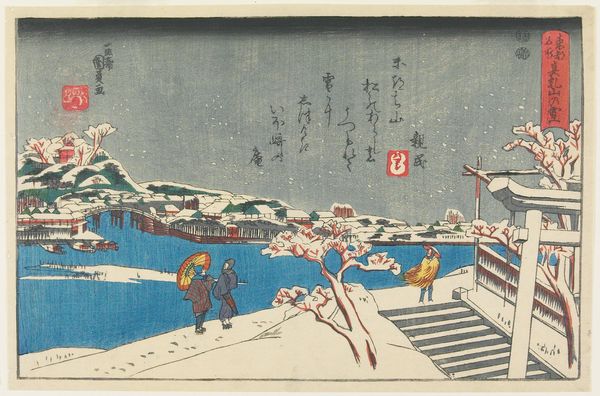
Dimensions: 8 3/4 x 13 11/16 in. (22.2 x 34.7 cm) (image)10 x 14 1/4 in. (25.4 x 36.2 cm) (sheet)
Copyright: Public Domain
Utagawa Hiroshige’s woodblock print, Uraga in Sagami Province, captures a snow-covered coastal village, encapsulating the aesthetic and social values of 19th-century Japan. This print is part of a larger series, “Pictures of Famous Places in Japan,” and it reflects the growing interest in landscape as a subject for art. Woodblock prints were not merely artistic expressions but commodities, catering to a burgeoning merchant class with a taste for travel and leisure. Hiroshige’s compositions present an idealized vision of the Japanese landscape. Note how the artist frames the scene with natural elements, drawing the viewer into a harmonious world. The Tokugawa Shogunate’s policies influenced artistic expression. Prints like these offered a safe outlet for cultural expression, reinforcing a sense of national identity. We can better understand this artwork by researching the history of the Tokugawa era, woodblock printing, and the social changes that shaped artistic patronage. The meaning of art lies not just in the image itself but in the web of social and institutional contexts in which it was created and consumed.
Comments
No comments
Be the first to comment and join the conversation on the ultimate creative platform.
